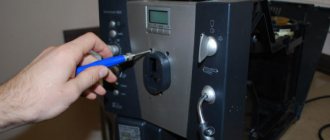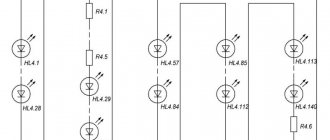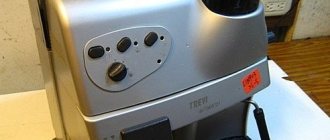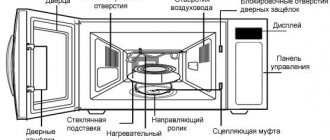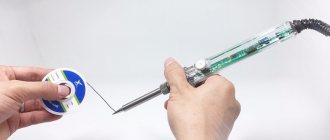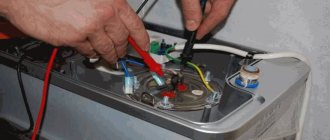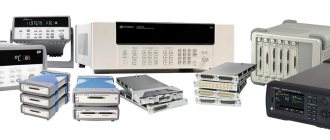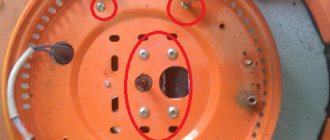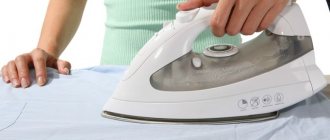If you truly love coffee, then you bought a coffee machine a long time ago and have no idea how you lived without it before.
Ever since the evening, you’ve been fantasizing about pouring in some grain, putting down a cup and waiting for the kitchen to be filled with a familiar aroma so you can wake up.
And sometimes you don’t deny yourself a cup right at night. But at one point, the coffee machine may fail and not turn on, stop noticing grain or heating water. What should I do, call the service? Do not hurry.
In our article we will tell you not only about the most popular coffee machine malfunctions, but also tell you how to fix them without a technician.
Water is leaking from under the horn
If you find that the coffee machine is leaking at the junction of the horn and the body, this is not a very serious malfunction that can be easily repaired with your own hands. Most likely, water is flowing due to the fact that the sealing ring at the junction of the so-called “spout” and the body of the coffee machine is clogged. Clogging can occur due to anything: fat deposits, wet pulp, coffee, foreign objects, etc. In this case, to repair you only need to wash the contaminated area and reassemble the horn.
If the coffee machine is leaking because the seal is damaged (cracked or torn), you need to replace it with a new one. Here you should draw your attention to the fact that it is necessary to replace the o-ring with one with exactly the same characteristics. If you simply find a similar shaped seal in your home workshop (for example, from a car part), you don’t need to install it, because the rubber from which such a product can be made may not be sufficiently resistant to temperatures or not so elastic. The same requirement applies to other consumables!
How to fix a leak yourself
We also draw your attention to the fact that when repairing a coffee machine like this yourself, you need to check the filter of the horn before installing a new seal. Perhaps the filter is clogged with coffee deposits and the breakdown occurred due to the fact that water under pressure was looking for a weak point of breakthrough. If the filter is not cleaned on time, more serious problems may occur.
By analogy, you can repair or replace any other oil seal that is leaking. Did you see water running out of the coffee machine? Don't be afraid to repair the problem area yourself. The main thing is to do this in time, before the water reaches the wiring and electronic unit. Timely repairs can protect you from electric shock and your equipment from complete failure. It should also be noted that the opposite situation - when the coffee machine does not pump water, can occur due to a malfunction of the piston located above the brewer. You can also try to repair it yourself after a visual inspection.
There was noise from inside, the pressure from the horn decreased
If you notice that the water from the coffee machine is flowing poorly and at the same time there is an extraneous whistle or noise, it means that the mesh or the filter itself in the horn is most likely clogged. It won’t be difficult to wash it, not to mention that such repairs won’t take much time. Special products are sold for cleaning coffee machines or coffee makers from grease. You can also carefully remove debris with a toothpick. The main thing is that when repairing a coffee machine on your own, do not scratch the internal containers, as even small scratches will retain the ground coffee, which contributes to the rapid clogging of the equipment.
If the coffee machine is noisy and does not pour coffee well, it may even be because the filter is clogged due to the coffee beans being ground too strongly. Start the repair by opening the container with coffee beans and checking the grind size. If you see coffee dust, adjust the grind size manually (many coffee machines have this function). Well, the last reason for extraneous noise is wear of the internal pump mechanism, as a result of which the coffee machine makes noise, hums and does not pour water well. In this case, the weak pressure can only be repaired by replacing the pump.
What to do if the coffee flows weakly from the cone
Operating principle of a Saeco coffee machine
Many owners of coffee machines from a well-known brand praise their performance and productivity. The coffee machine is very convenient, simple, does not create noise during operation and consumes minimal electricity. However, there is no perfect technology that would never break down. There may be enough reasons to repair Saeco, for example:
- improper operation;
- very hard water;
- low grain quality;
- natural wear and tear of rubbing parts.
Saeco Vienna
Before we begin diagnosing the malfunction and repairing it, let’s figure out how the coffee machine works using the Saeco Vienna model as an example.
The functionality of this type of machines is very wide, they can:
- Grind coffee beans.
- Brew coffee.
- Prepare milk foam for various drinks.
Important! All tasks are handled by basic elements of equipment that require regular maintenance.
The main elements of the coffee machine are:
- Brewing mechanism. All Saeco coffee machines are equipped with removable brewing mechanisms. This greatly simplifies the process of cleaning the element.
- Boiler. This is where water for drinks is heated.
- Machine hydraulic system.
- Cappuccino maker. This device is designed to froth milk and form a delicate foam.
- Drip tray.
- Container for waste coffee.
The coffee dispenser is fully automated:
- The ground coffee falls onto a flat bowl located inside the cylinder.
- After grinding is completed, a mechanical alarm is triggered and the servo drive begins to operate.
- The piston with the cylinder turns on its side and begins to move towards the stop, where the drink will be brewed.
- At the end of the brewing process, the mechanism performs the reverse action. At the same time, the inclined lid is activated, which, becoming perpendicular to the movement, removes the tablet and dumps it into the waste material receptacle.
How do the pump and boiler work?
The water in the car moves along a very simple route: water is taken from the tank by a pump (under a pressure of 15-20 atm.) and enters the boiler. The boiler itself is round and consists of two halves, which are bolted together along the entire perimeter. A heating element is attached to one part. The bimetallic plate serves as a temperature sensor; its tension is changed with a special handle. This is necessary in order to get the temperature for brewing coffee (95 degrees), and to get steam, you need to have a temperature of 127 degrees.
To prevent water from returning back, there is a check valve at the entrance to the boiler. At the outlet there is a bypass valve through which water passes for brewing and producing steam.
Important! What process will take place is decided by the position of the water/steam regulator. It is enough to turn the regulator to the water or steam position and the bypass valve will operate in the desired mode.
If all the processes are combined together, the process of obtaining the drink looks quite simple:
- The pump pumps water from the reservoir into the boiler.
- The water is heated to the desired temperature.
- The bimetallic plate is activated and the contacts of the heating element open.
- The warning light comes on.
- Pressing a key allows you to get a ready-made drink or make foam.
Extraneous noise + complete lack of work
If your coffee machine is noisy and does not brew coffee, then you need to independently find the cause of the breakdown. First of all, determine whether the water is heated and supplied in a heated state. If the coffee machine takes water and heats it, but does not dispense coffee, most likely the cause of the breakdown is the formation of an air lock. In this case, the repair boils down to running hot water through the cappuccino maker, which should fix the problem. If coffee flows from the spout in a weak stream, try rinsing the entire system with a special detergent, because... all symptoms indicate clogged pipes. Didn't that help either? It is better to take a non-working coffee machine to a service center, because... there has already been an electronic breakdown, the repair of which is unlikely to be possible for you.
By the way, the electronic unit must independently signal that the system is clogged by displaying an error or an exclamation mark on the display (this should be described in the operating instructions). Sometimes the error may not light up because the corresponding sensor is faulty, which needs to be checked and, if necessary, replaced!
Buttons don't work
If the coffee machine does not respond to pressing buttons or other possible commands, there may be several reasons for the malfunction. First, check that there is water and coffee in the appropriate containers, because... Most modern coffee machines will not turn on in the “idle” position. Secondly, look closely at the display, which may immediately indicate a certain error. After a visual inspection, you can move on to more serious repairs - remove the front panel and use a multimeter to test all the buttons for power. We have already told you how to use a multimeter.
Sometimes the buttons do not work because coffee was poured on them before and now they are stuck. You can remove sticky dirt with a cotton swab dipped in alcohol. We've done everything, but you still can't set up the buttons on the coffee machine? It is better to contact specialists, because... The problem may lie in a malfunction of the electronic control unit, and in this case, repairing a coffee machine is much more difficult. For those who are “friends” with the tester and know how to check the integrity of the circuit, we advise you to sequentially check all the elements of the circuit. Perhaps the coffee machine is not working because the fuse has blown or some resistor has failed. Replacing a broken component on a board is not difficult if you know how to do it.
The main causes of the malfunction and ways to eliminate it
- Malfunction of the float sensor . The part is responsible for supplying liquid from the reservoir. The reason for its malfunction is that it gets wet and clogged with foreign objects. As a result, the device stops transporting moisture, and the coffee machine shows that there is no water.
Try to check the sensor. Diagnostic algorithm:
- fill the tank;
- watch the float;
- it did not appear on the surface - the problem was detected.
Replacing spare parts should be entrusted to professionals. A user who does not understand the technical features of coffee makers may purchase an unsuitable part, the installation of which can lead to damage and increase the cost of subsequent repairs at the service center.
- Filters are clogged . The coffee maker has built-in filters that clean the stream before pouring the drink into the glass. For stable and long-term operation of the entire system, it is recommended to clean them at least once a week. Otherwise, the blockage formed in the filters may affect the pump responsible for moving the liquid. It is easy to notice the flaw: the pump will become noisy at idle, stopping making characteristic operating sounds and creating the pressure necessary to supply boiling water.
If a defect occurs, the filters must be replaced. This can be done independently or in a specialized center.
- Leak . The problem usually occurs when the O-ring is damaged. It is located at the connecting junction of the body and the horn of the device. In this case, moisture will enter the machine, but when you start pouring coffee, leaks will appear.
The defect can only be eliminated by replacing the sealing ring. The main thing is to choose the right spare part, as close as possible to the original. In this situation, it is better to contact a specialist.
- Control module . Sometimes the reason for displaying information about the absence of moisture is a malfunction of the software module or the presence of physical defects in individual parts (horn, heating elements). Preliminary diagnostics will be carried out and the system board will be replaced.
- The system does not see the feed node . This problem occurs mainly among owners of DeLonghi coffee machines. But equipment from other brands also faces such damage. Its main symptom will be the display of the inscription “Insert feed unit”. Simply move the coffee machine away from the wall and insert the clear tube into the round inlet, appropriately named “Water.” The circulation of liquid will resume and you will be able to prepare a hot drink.
In order to save time, owners try to fix problems themselves. With minor breakdowns and understanding of the problem that has arisen, this is possible.
But sometimes consumers can purchase low-quality spare parts or break serviceable parts during disassembly. All this can become a serious problem, a special case of which is equipment leaving the operating mode. Then the owner’s expenses for restoring coffee equipment will increase significantly.
Contacting the Service Center will help you avoid this. Our technicians have experience in repairing and servicing coffee machines of different brands (Krups, Saeco, Dolce Gusto, Nespresso, Bosch, Jura), and also fix all breakdowns at home during one visit. You can leave a request either by calling 8(495) 213-33-33
, and online on the website.
No power supply
If the coffee machine does not work at all, we recommend that you first proceed by analogy with the instructions for repairing an iron yourself. First, check the integrity of the cord and the power at the outlet. After this, pay attention to whether the door of the coffee machine is closed. Most modern models have protection against starting when the door of the brewing unit is open and, perhaps, the equipment does not start for this reason. If you have not been able to find any obvious reasons, proceed to disassemble the case and, one by one, use a multimeter to test all sections of the circuit from the electrical cord to the thermal protection elements. Didn't find a problem? It is better to take a coffee machine that has broken down to a service center for repairs, especially if it is under warranty.
We also recommend viewing the repair instructions for a coffee machine that turns off:
How to solve the problem with equipment turning off
Coffee machine repair services
Unfortunately, it is not always possible to repair a coffee machine yourself, without resorting to the services of qualified technicians. In some cases, even simple diagnostics on your own is impossible - this mainly concerns expensive devices that are completely protected from any attempts to infiltrate their internal operation.
If you are the happy owner of just such a device, then at the slightest glitch in the operating program, immediately call a specialist from a trusted service center.
In addition, the measures taken independently cannot always eliminate the problems that have arisen:
- Parts that fail cannot be repaired - they must be completely replaced.
- Often, the reason for the incorrect indication of tank fullness is associated with software errors, which can only be eliminated by a specialist who has the necessary diagnostic equipment.
A technician with certain experience and knowledge will quickly check the condition of the filters, test the fluid compartments for leaks, and find out why this or that indicator is not working.
By contacting the Service Center for help, you are guaranteed to receive highly qualified assistance, as well as a full guarantee for all types of services provided and installed spare parts.
+7
The service center provides services throughout Moscow and the Moscow region.
Source
The equipment does not see coffee
Sometimes it happens that the coffee machine does not see coffee, although it is poured into the tank. This happens for many reasons: the control unit has failed, the engine does not work, or the coffee dispenser with funnel is faulty. Here, again, a visual inspection and a tester will help to find faults. If you find that the internal mechanism is covered with coffee dust, it means that the coffee duct has broken down, resulting in coffee dust getting into the engine compartment. Repairing a coffee machine in this case comes down to the fact that you need to replace the engine yourself, but if this is not practical, it is easier to buy a new coffee machine.
Here I would also like to describe another “disease” of coffee makers and their analogues - the lack of coffee supply. This problem may occur because the brewer is clogged or the degree of grinding of the coffee beans is too small. If your coffee machine does not dispense coffee or dispenses too little coffee, try setting a higher grind level or cleaning the brewer.
Saeco coffee maker repair
If the coffee machine is used in a domestic environment, then a major overhaul of the Saeco may be required only after preparing five thousand servings of the drink. However, the lack of service for decalcification of the device may lead to breakdown, since in this case the heater inside the boiler may fail. But perhaps the most common cause of breakdown is natural wear and tear of the device.
Important! According to the laid down technical characteristics, the main components of the coffee machine must be replaced after preparing several thousand servings of the drink. For example, the following elements are subject to replacement:
- Heating boiler.
- Coffee grinder.
- Brewing mechanism.
- Steam generator, etc.
Repairing Saeco coffee machines is complicated because the unit body is non-separable. You can remove the cover from above and unscrew a huge number of screws, only after that you can get the insides of the unit out. In case of some breakdowns, repairing the device can take considerable time and can only be carried out by specialists from the service center, especially if it is a major overhaul and requires the replacement of a large number of spare parts.
Disassembling the device
Repairing a Saeco machine always begins with disassembling the unit.
Important! If you do not have a sufficient level of relevant knowledge, then do not even try to disassemble the machine. In addition, working with electricity always involves a risk to life, so during repairs it is necessary to strictly adhere to safety requirements.
If you decide to independently identify the malfunction and repair the Saeco, then the procedure for disassembling the coffee machine is as follows:
- Disconnect the unit from the network.
- Open the front cover.
- Remove the compartment that holds the waste and the coffee dispenser.
- Pull out the mug stand along with the tray.
- Remove the water container.
- Remove the coffee bean container. It is secured with two Phillips screws.
- Under the water container, remove another screw.
- There may be a screw recessed deep down behind the bean compartment; if there is one, unscrew it.
- Pull the handle and remove the top cover of the machine.
- Unplug the water hose that is attached to the top cover.
- Remove the front door using a screwdriver.
- Remove the entire unit from the housing.
Internal organization
A coffee machine is a rather complex device:
There are at least three motors inside that require power.
- The power supply itself is switching. Therefore, the transformer is powered through a power transistor, which, in turn, is controlled by a high-frequency pulse generator. Usually this is a small microcircuit.
- The microcircuit is supplied with power from a diode bridge.
- At the input there are numerous filters consisting of capacitors, resistors and chokes.
- The fuses are not in the transformer circuit, but are powered through varistors if the circuit overheats. The protective element, very often, is a low-resistance resistor, which burns out when the current load increases.
Important! The voltage from the high-frequency generator is supplied to the power transistor, forming high-frequency pulses, which, passing through the transformer, are filtered and rectified. As a result, not current, but high-frequency pulses are supplied to the primary winding.
Diagnostics
In order to check all elements of the power supply, special tools are needed. But sometimes you can determine the breakdown without opening the case, for example:
- If the pump works, but no water comes out, the bypass valve is most likely broken.
- The unit does not turn on - there is a problem with the electrical part, that is, a problem with the power supply or motor.
Important! If you are a true coffee connoisseur, you will probably also be interested in reading about the best varieties of coffee and tea.
A light comes on or an error appears on the display
If the coffee machine gives an error (as in the photo below) or the indication on the front panel lights up (the light is blinking), first look at the operating instructions. Manufacturers of coffee machines must indicate in the booklet all possible errors, the reasons for their occurrence and how to repair them yourself.
Most often the problem occurs due to a malfunction of a sensor. In this case, you can try to repair the coffee machine by completely cleaning and flushing the system. Did not help? Check that all containers are fully inserted and that the float in the water tank works. Usually, a thorough visual inspection and familiarization with the operating instructions helps to quickly repair the breakdown. With coffee machine errors, everything is much simpler. Even if you have lost the booklet that contains all the error codes, the Internet can help you! The official websites of most modern brands of coffee machines provide tables with all possible errors depending on the model of the equipment, which will allow you to quickly carry out repairs at home.
Error code “E05/E14” was displayed
- Various malfunctions and errors;
- Device overheating.
Unplug the coffee machine and let it rest for 1 hour.
Call us on tel. and get advice on the necessary actions if error code “E05” occurs.
ADVICE!
The operating instructions describe the meanings of the indicators. Download the manual for the Saeco coffee machine, find the chapter describing the meaning of the indicators and try to fix the problem on your own.
Water does not heat up
Very often you can see various complaints on forums, saying that the coffee machine does not heat up, but it works, or it simply heats poorly and does not produce steam. Here, as in the case of a dishwasher malfunction, the heating element, the heating element, is most likely broken. In addition, there may be no water heating due to controller failure. All you can do is test the heating element and controller with a multimeter, which will allow you to find the problematic section of the circuit for its further replacement. Poor water heating, in fact, like the situation when a coffee machine does not heat water at all, is very common due to the poor quality of drinking water (it is too hard).
How to repair a coffee machine that does not heat water
The cappuccino maker is out of order
It very often happens that the cappuccino maker in the equipment does not work, as a result of which the coffee machine does not froth or froths the milk poorly and does not make milk foam. As a rule, a coffee machine does not foam for two reasons: bad milk or clogged air channels that create foam. Milk must be pasteurized, fat content from 2.5 to 3.5%, not powder. As for clogged air ducts, this can happen due to poor maintenance of the coffee machine. After you make coffee with frothed milk, be sure to rinse the cappuccino maker with clean water for 2-3 minutes. If you neglect washing, after a while the channels will become clogged, and instead of foam, the coffee machine will dispense hot milk, which in any case will entail a slightly labor-intensive repair at home.
Most modern coffee machine models include an automatic washing function. If it is missing, you should carefully clean it yourself. Please note that you should not use hard or sharp objects to flush the air channels. If you damage the hole, the cappuccino maker may stop functioning altogether.
Video instructions for repairing a cappuccino maker
Another similar reason is that the coffee machine does not suck in milk when the desired mode is turned on. In this case, we recommend that you check the pump and milk supply system, which is most likely clogged.
Milk jug does not foam
- The cappuccino maker tubes are clogged;
- The milk supply tube to the foam frothing mechanism is installed incorrectly;
- Unsuitable milk is consumed.
First, make sure that the spout is completely open and that the milk supply tube is correctly connected to the frothing mechanism.
If the damage persists, disassemble the milk jug and wash each part under running warm water.
Try to use semi-skimmed and whole cow's milk, as well as soy and lactose-free milk.
The filter in the water tank is dirty
Replacing the water filter in a coffee machine is a very responsible job. If you replace the filter incorrectly, an air lock may form in the system, the pump will start to run idle and then fail. By the way, running the pump in idle mode can cause the coffee machine to make noise but not work.
Correctly replacing a filter in a coffee machine looks like this:
- turn the filter over with the inlet and outlet openings up;
- fill it completely with tap water;
- pour water into the appropriate reservoir of the coffee machine;
- complete the installation.
Water does not flow through the spout or the pressure is too small? Before repairs, also try to check how clean the filter is in the tank.
The presence of water is not displayed
If the coffee machine does not respond to water, although the tank is full, most likely the problem is in the corresponding sensor - the float. You can check if the float is working as follows: pour water into the tank and see if the float floats to the top. If the sensor remains at the bottom, it may be flooded with water or clogged with debris. Try to clean the float workplace, and disassemble and dry the sensor itself. Did not help? Replace the element with a new one, which will become the entire repair.
The reason why moisture gets into the float and as a result of which the coffee machine does not see water in the compartment may be that you are pouring hot water. There is no need to do this, because... in this case, air comes out of the float and when the liquid cools, a vacuum occurs, which sucks water into the sensor.
Rules for the prevention of coffee machines and coffee makers
- Clean the coffee machine filters. Try to carry out this procedure at least once a week (if used frequently, then 2-3 times). This will reduce the risk of blockages and plaque formation, as well as avoid destruction of other elements of the technical system.
- If possible, check the condition of all components (including the float sensor, water container and O-ring). Treat them carefully and with care. If it is not possible to do this yourself, invite a competent technician to check it.
- Choose the coffee and liquid you pour carefully (matte non-greasy and bottled without minerals, respectively).
- Periodically order diagnostics from specialists. This will avoid serious problems in the future.
By following the rules for using household appliances, you can prevent many breakdowns and extend their service life.
Does not grind grains
It also happens that the coffee machine does not grind coffee during operation. Here the repair comes down to the fact that you need to disassemble the case yourself, find the coffee grinder and clean it thoroughly. As a rule, high-quality cleaning helps solve the problem and repair this simple breakdown. A similar breakdown - when the coffee grinder does not pick up grains - can be solved very simply; you just need to correctly adjust the grinding degree. If even after this the mechanism does not pick up the coffee, it is better to contact a specialist.
Problems with coffee capsules
Well, the last thing I would like to tell you about is why coffee machines do not puncture capsules, or tablets as they are also called. The piercing mechanism is quite simple, so most likely you do not need coffee machine repair, but recommendations that will allow you to correctly pierce the capsule. It all depends on how you direct the tablet into the piercing receiver. You must carefully drop the tablet so that it lands evenly on the piercing surface, then gently press the lever. The slightest misalignment can cause the mechanism to not compress the tablet or throw it back. If pierced correctly, the result should be the same as in the picture.
It is not always possible to independently identify the cause of a coffee machine breakdown and eliminate it. Therefore, it is better to use the services of professionals in.
Related materials:
- How to choose a coffee maker for your home
- How to become an electrician
- Low voltage in the network - what to do
How to fix a leak yourself
Video instructions for repairing a cappuccino maker What to do if the coffee flows poorly from the horn How to repair a coffee machine that does not heat water How to solve the problem with the equipment turning off Material taken from the site: https://samelectrik.ru/

